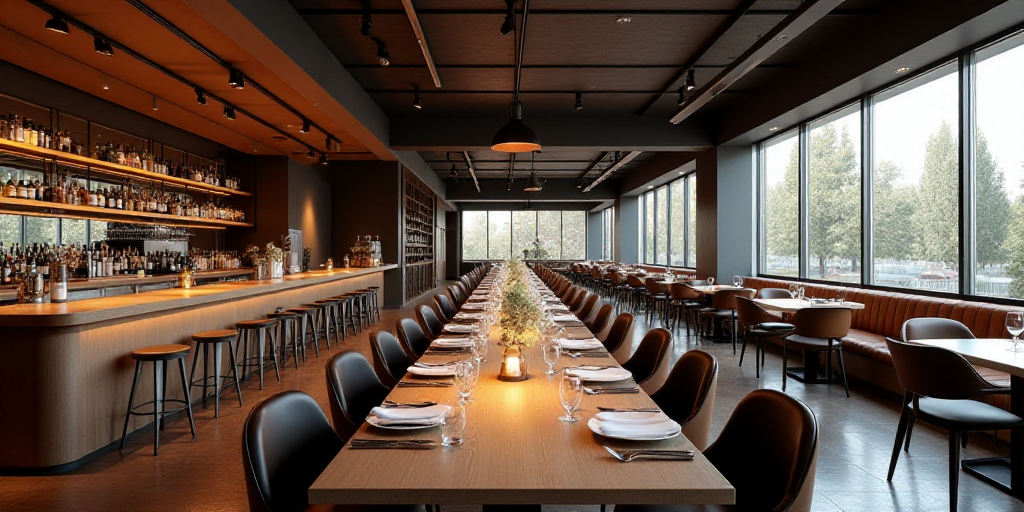Introduction to the Growing Travel and Hospitality Telecom Market
According to Travel & Hospitality-Telecom Services Market Statistics, the global market for travel and hospitality telecom services is projected to reach $25,902 million by 2025, with an annual growth rate of 5.4% until 2030.
Vingcard: A Leading Provider of Hospitality Connectivity Technologies
Vingcard, a subsidiary of ASSA ABLOY, specializes in connectivity technologies for the hospitality and entertainment industries.
The company identifies growth opportunities in digital key niches, IoT connectivity, and cloud-based technological solutions in key markets, such as Mexico, a major global tourism hub.
“The convergence between private hotel networks and public telecommunications infrastructure presents significant opportunities,” says Sebastián Barrionuevo, Vice President of Vingcard-ASSA ABLOY for Latin America and the Caribbean.
The Evolving Hotel Experience: From Physical Spaces to Technological Platforms
Hotels are no longer just physical spaces for accommodation; they are transforming into genuine technological platforms that concentrate, process, and distribute connectivity for guests.
This shift addresses the needs of diverse generations of travelers, each with distinct technological expectations and consumption preferences. Additionally, there is a growing demand for cybersecurity, IoT services in rooms, and integration of highly interconnected supply chains.
In this context, access control systems have evolved from mere locks or hardware installations to nodes that connect devices, generate and analyze data, and manage the interoperability of multiple internal and external networks.
The technological infrastructure supporting these intelligent access systems relies on high-speed networks, cloud platforms, and advanced data security protocols. This directly impacts hotel operational efficiency, guest experience personalization, and regulatory compliance.
However, this evolution also presents new challenges, such as data management, technological interoperability, and inclusive access for both local communities and international visitors.
Integrating Multiple Technological Layers in Hotels
—How do access control systems evolve amidst multiple technological layers, including telecommunications networks, IoT systems, cloud platforms, and customer databases?
Access control systems have transitioned from isolated security tools to central components of a hotel’s digital infrastructure. Today, they function as convergence points between telecom networks, IoT devices, and cloud platforms, managing not only who enters or exits a room but also how guest data, devices, and experiences are connected.
In this highly interconnected system, an intelligent access control system can integrate with all the hotel platforms: energy management solutions, mobile check-in platforms, and personalized guest experiences—from room temperature to traveler lighting preferences.
These market statistics (Travel & Hospitality-Telecom Services Market Statistics) confirm the strategic importance for hospitality businesses to position themselves as true digital hubs and integrate intelligent systems to enhance guest experiences and contribute significantly to the global growth in telecommunications and hospitality.
Technological Interoperability Challenges
Technological interoperability presents a dual strategic challenge: connecting devices from multiple manufacturers in a multi-service network environment and complying with international data protection regulations, such as the EU’s GDPR or Mexico’s data protection law.
Each lock or sensor is an IoT node that must communicate securely and standardized. With 57% of hospitality IoT devices using proprietary protocols (IoT Analytics), compatibility with cloud platforms and networks from different providers becomes difficult.
Moreover, there is a growing demand for bandwidth: the Hospitality Technology Report estimates a more than 30% annual increase over the past decade. This scenario necessitates supporting next-generation connectivity technologies, from Wi-Fi 6 to 5G with end-to-end encryption and network segmentation to isolate critical accesses and reduce risks.
Opportunities from Converging Private Hotel Networks with Public Telecom Infrastructure
Converging private hotel networks with public telecommunications infrastructure opens significant opportunities. For example, enabling 5G roaming, high-precision geolocation services, or immersive tourism experiences.
Technologically, this requires standards already widely adopted by the telecom industry, such as Open RAN and network slicing, which allow reserving specific capacity in a public network for low latency and critical traffic prioritization.
From a business perspective, this evolution enables as-a-service models, from premium connectivity for video conferencing to streaming and low-latency gaming.
According to Grand View Research, the global market for 5G private networks reached $2.4 billion in 2023 and is projected to grow at a compound annual growth rate of 43.9% until 2030, solidifying its relevance in high-density sectors like hospitality.
Monetizing Guest Data for Enhanced Experiences and Sustainability
Although data monetization in hospitality is still in its infancy, cloud tools already enable digital scalability, reducing operational costs, reinforcing security, and improving resilience.
This translates to personalized services, dynamic pricing, and energy efficiency strategies.
More than 55% of hospitality IoT projects incorporate edge analytics (IoT Analytics), processing information locally before sending it to the cloud. This reduces data leak risks, enhances response speed, and facilitates integrating data into sustainability initiatives.






